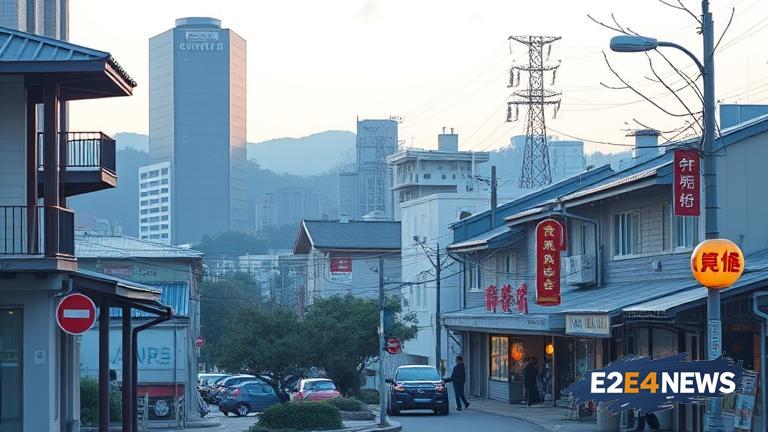South Korea’s economy has been facing a significant slowdown in growth, with the country’s gross domestic product (GDP) expanding at a rate of 1.1% in the first quarter of the year. This slowdown is largely attributed to the ongoing global trade tensions, particularly between the United States and China, which have resulted in decreased demand for South Korean exports. The country’s exports, which account for a significant portion of its economy, have been severely impacted by the trade tensions, with a decline of 8.2% in the first quarter. The slowdown in exports has had a ripple effect on the entire economy, with the manufacturing sector experiencing a decline of 3.5% in the first quarter. The construction sector has also been affected, with a decline of 2.1% in the same period. The slowdown in the economy has raised concerns about the country’s ability to achieve its growth target of 2.4% for the year. The government has announced plans to implement stimulus measures to boost the economy, including a supplementary budget of 6.7 trillion won (approximately $5.6 billion). The stimulus package aims to support small and medium-sized enterprises, as well as low-income households. The government has also announced plans to invest in emerging technologies, such as artificial intelligence and 5G networks, to drive growth and create new job opportunities. Despite the slowdown, South Korea’s economy remains one of the strongest in the region, with a highly skilled workforce and a strong manufacturing sector. The country’s tech industry, in particular, has been a driving force behind its economic growth, with companies such as Samsung and LG leading the way in innovation and exports. However, the slowdown in the economy has highlighted the need for the country to diversify its exports and reduce its dependence on a few key industries. The government has also announced plans to increase investment in research and development, to drive innovation and create new industries. The slowdown in the economy has also raised concerns about the impact on employment, with the unemployment rate increasing to 4.3% in the first quarter. The government has announced plans to implement measures to support job creation, including the creation of a new job training program. The program aims to provide training and support to workers in industries that are experiencing a decline, to help them transition to new jobs. The government has also announced plans to increase investment in education and training, to ensure that workers have the skills they need to compete in the changing job market. The slowdown in the economy has also highlighted the need for the country to address its demographic challenges, including a rapidly aging population and a low birth rate. The government has announced plans to implement measures to support families and increase the birth rate, including the provision of childcare support and parental leave. The slowdown in the economy has also raised concerns about the impact on the country’s fiscal deficit, with the government announcing plans to increase taxes to support its stimulus measures. The government has also announced plans to implement measures to reduce its debt, including the sale of state-owned assets. Overall, while the slowdown in South Korea’s economy is a concern, the country remains well-placed to weather the storm, with a strong economy and a highly skilled workforce. The government’s stimulus measures and plans to invest in emerging technologies and drive innovation are expected to help drive growth and create new job opportunities.
